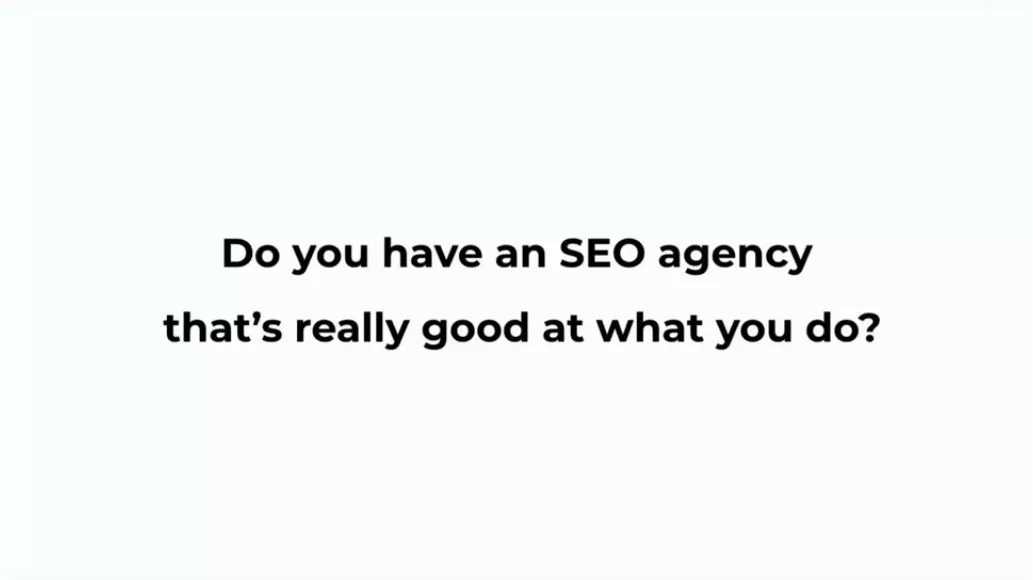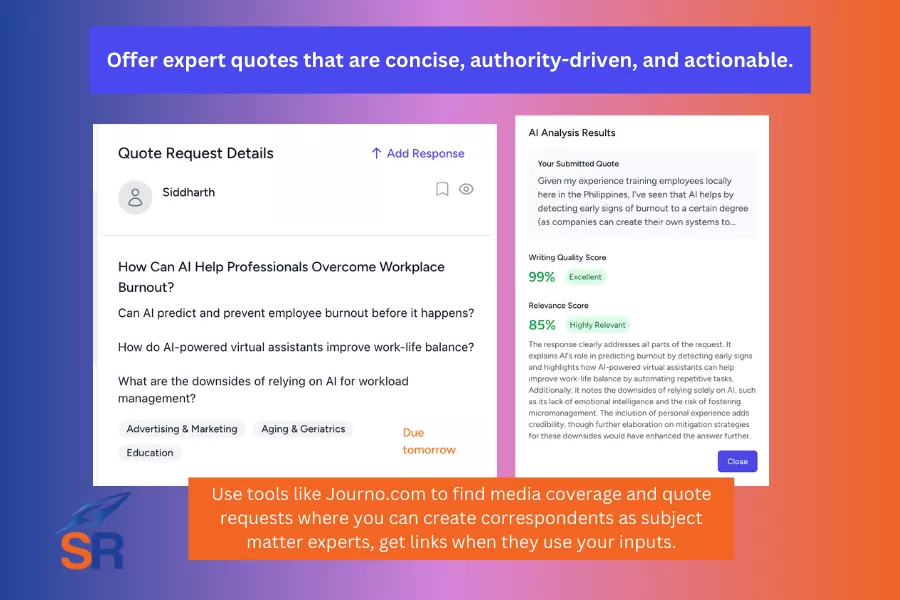Developing link building strategy is a critical factor in link building. Not only does it give a headstart toward a higher likelihood of success for the link building campaign, but it also affects how the campaign could assist in achieving the necessary SEO and business goals.
Without a proper strategy, SEO could go sideways. As a result, optimization for the website will see little greater results.
That’s why having a customized strategy versus a template link building strategy could benefit your SEO campaign in many ways. Before we dive into some actionable tips, let’s look at what customized link building approaches offer versus boilerplate approaches.
Contents
ToggleCustomized VS Boilerplate Approach
Many SEO professionals develop a boilerplate approach to link acquisition that spans different types of clients and verticals. After reading a couple of link building articles here and there, they create their own SOPs solely based on this public information.
Boilerplate link building strategy has its cons. One drawback is it isn’t necessarily designed to cater to the individualized needs of the client’s off-page site optimization.
For instance, instead of targeting highly relevant blogs and publications as link opportunities for the website, a boilerplate strategy mediocrely chooses generic blogs with multiple blog categories as long as the listed domains pass the required link metrics.
This is contrary to creating a customized link building strategy that offers several advantages and benefits to the client’s branding and search ranking capabilities.
Link strategy customizations focus on assessing the website’s link profile compared to its organic ranking competitors and spotting low-hanging fruit to get backlinks that will help the site’s targeted pages climb in Google search results.
Below are some tips and examples on how you can develop customized link building strategies for SEO clients.
Doing Reverse Engineering To Analyze What’s Out There
Reverse engineering other sites’ success in acquiring relevant links proves effective in understanding the link ecosystem in a particular industry.
Seeing how others got their links and what could be their go-to source for link opportunities could provide insights into your current strategy (or a new one you’re about to develop).
One of the quick ways to reverse engineer other sites’ link profiles is through Ahrefs’ Link Intersect. It basically helps you find linking sites to sites you’ve entered – that aren’t linking to your client’s site.
By doing link intersection, you’ll see exactly domains you may have missed as potential link opportunities.


Another technique we’ve been using is diving into new websites that are currently gaining success in organic search. These websites may not have strong domain authority, but they have been ranking for multiple long-tail keywords, enabling them to earn links via rankings.
One way to find these organic rising domains is through keyword research activity.
Enter a relevant keyword and filter results based on the Lowest DR: Up to 5.

Click the SERP to find the keyword’s low DR site ranking. You’ll come across low-authority domains that you could analyze to discover keywords for which you can easily rank.

Invest time in analyzing the link profiles of different sites (both competitors and non-competitors) to discover new sources of link opportunities.
The key is to know how new and established sites get links from industry-relevant places.
Derive Tactics From Business Partnerships
One robust way to generate ideas is through business partnerships. Relationships you’ve built over the years (or just recently) could help spark new link building ideas.
For instance, we’ve been building links for a top luxury travel brand, and as it turns out, they have been publishing a series of posts (listicles) on top X restaurants in different target cities.
Given they’ve been featuring hundreds of local restaurants in their blog posts, they could ask these restaurants to include a relevant link to our travel client from one of their blogs.
There are still other ways to generate link building ideas through partnerships, here are some strategies you can try:
- Incentivize other businesses with free products/services for your premium offers. For instance, you can give them lifetime access to a Pro account in one of your SaaS products in exchange for a link in one of their blog posts.
- Cross-promote each other’s content assets to new audiences.
- Invite authors and thought leaders from other organizations to publish content on your blog, in exchange for exposure to their products or services. By creating high-caliber content through their expertise and experience (E-E-A-T), you increase the credibility and trustworthiness of your blog, as well as its reputation to your readers.
- Build alliances with entities and organizations that share your ideals (even with emerging influencers in your space). That way, it will be easier to expose your content to a wider audience, which can result in higher chances of getting natural links.
Picking The Right Target Pages
One overlooked aspect of developing a link-building strategy is identifying the right destination pages. Choosing the right target pages for links is essential to maximizing link impact on your site.
It could also drive early success to your SEO campaign, as those pages that get the initial links dominate Google’s SERPs for their respective keywords. Therefore, this elevates the entire domain’s authority to lift other pages with their rankings.
Assess the current website’s ability to rank in Google’s SERPs through its current domain authority.
Here are some tips to allocate links properly to your site. Let’s use eCommerce link building as an example:
- If your website is new, point links to the homepage and key category pages.
- If you have an established site with decent domain authority and significant link profile, point most links to category pages, a few to the homepage, and other links to higher categories.
- If your site has a strong authority and link profile, focus your links on category pages and key product pages.
The same approach could also be applied to SaaS by assessing the current site authority and its backlink profile strength.
Apply Lead Generation in Link Building
When developing link building ideas for clients, think of ways in which it could help drive leads to the brand.
One way is to focus on core audience groups when prospecting relevant link opportunities. While the thematic relevance of the domain you’re trying to get links from is important, you should consider the readers’ intent and potential buying power of their audience.
Align your buyer persona with your link prospecting audience groups to prioritize publications and blogs that include your clients’ go-to consumers.
Instead of thinking “just-for-links,” be aware of the impact of links on the overall branding of the site. Links serve as brand associations that have a tremendous effect on how the site is perceived by search engines and users.
Here are some tips for applying lead generation in link building:
- Do active social and community listening. See if your brand gets positive sentiments on niche forums and community discussions.
- Add value to discussions, if applicable, by answering community users’ topical questions.
- Reach out to publishers with X list of products/services and be featured in their lists (“where to buy” Y pages).
Proper Anchor Text Distribution
An effective link building strategy includes creating a diverse link profile through proper anchor text distribution.
The safe strategy leans toward branded anchor texts over exact matches. Over-reliance on exact matches can be seen as spammy and could cause trouble to the backlink profile if it consumes a large portion of your links.
Start by assessing your current backlink profile. If your site is new, you can invest in a few exact-match anchor links to establish the contextual relevance of your pages.
As soon as the site matures, you can add more branded anchor texts. From there, you can create an anchor text distribution cycle where every month differs from the other.
For instance, you can focus on branded anchor texts and a few exact matches in the first month. During the next month, your focus would then be on a partial match. Develop a strategy for a quarter period for the type of anchor texts you’re using to create a more diverse link profile.
Non-Boilerplate Approach to Link Building
Every website is unique in its context, situation, and needs. Therefore, it requires a customized strategy for each optimization process. Personalizing your link-building approach is crucial to SEO success, from audience targeting to generating link building ideas for clients.
Written By
Venchito Tampon
CEO and Co-Founder at SharpRocket, a link building agency. With a decade of experience, Venchito has a proven track record of leading hundreds of successful SEO (link builidng) campaigns across competitive industries like finance, B2B, legal, and SaaS. His expert advice as a link building expert has been featured in renowned publications such as Semrush, Ahrefs, Huffington Post and Forbes. He is also an international SEO spoken and has delivered talks in SEO Zraz, Asia Pacific Affiliate Summit in Singapore, and Search Marketing Summit in Sydney, Australia. Check out his other business - Hills & Valleys Cafe.
Reviewed By

Sef Gojo Cruz
COO at SharpRocket, overseeing end-to-end operations, from crafting link building strategies to leading high-performing teams. Previously led SEO initiatives at Workhouse, a digital agency in Australia, and Keymedia, a real estate media company based in New Zealand.
How our LINK BUILDING AGENCY in UK builds 250 links/mo consistently using Predictable Link Building Methodology™…
- Using a SIMPLE and PROVEN system
- Using a SCALABLE strategy
- No private blog networks
- No creepy outreach emails







